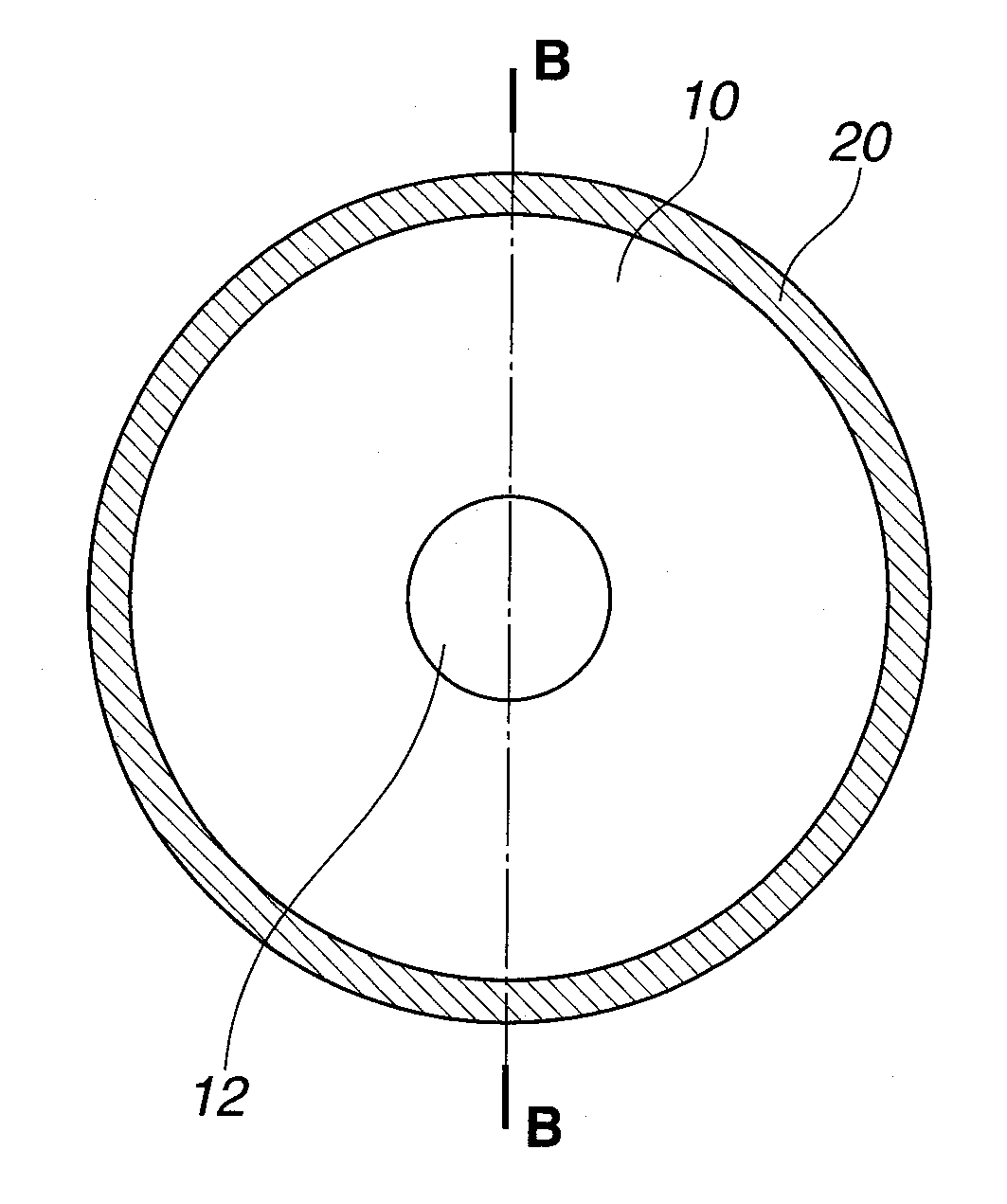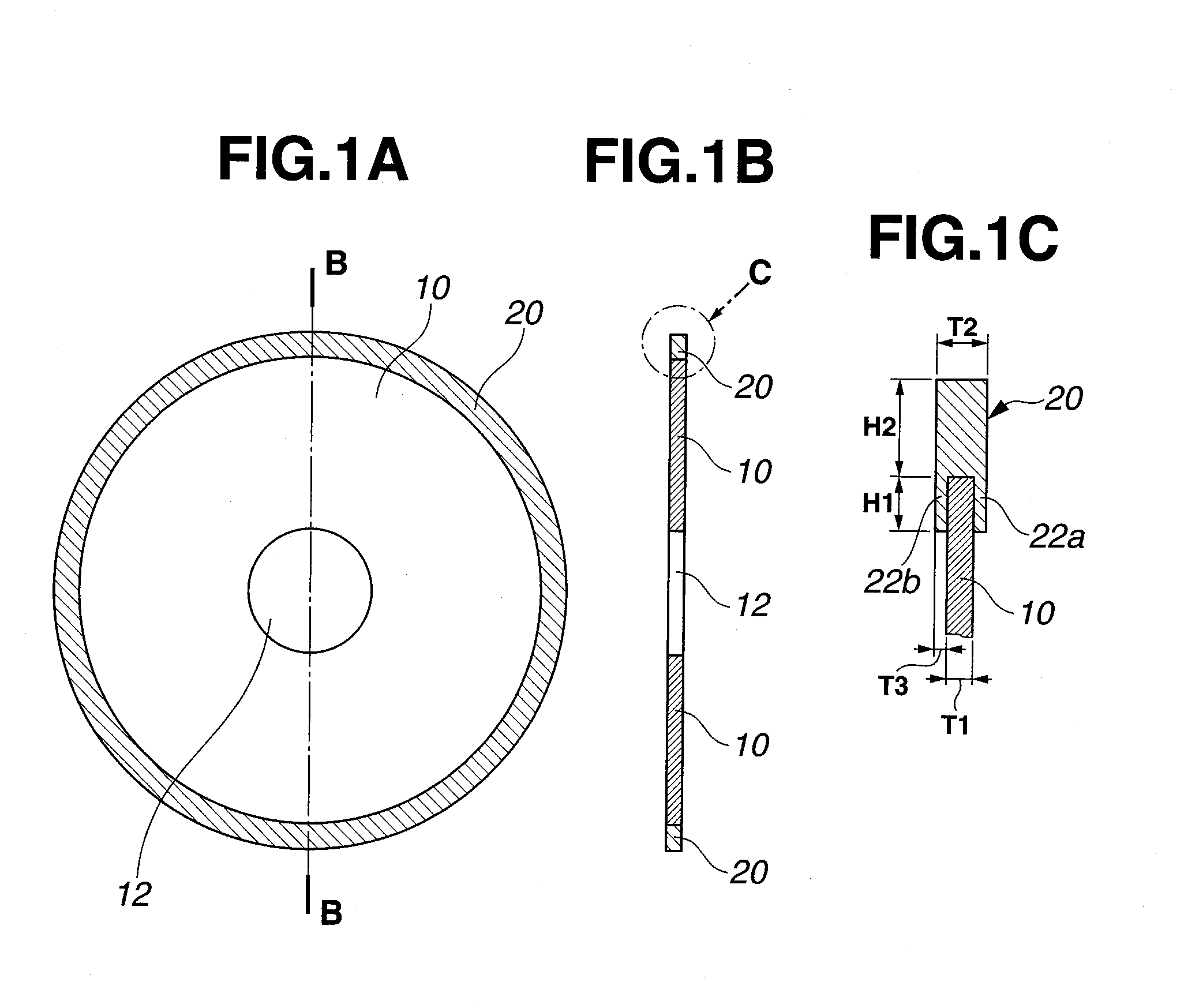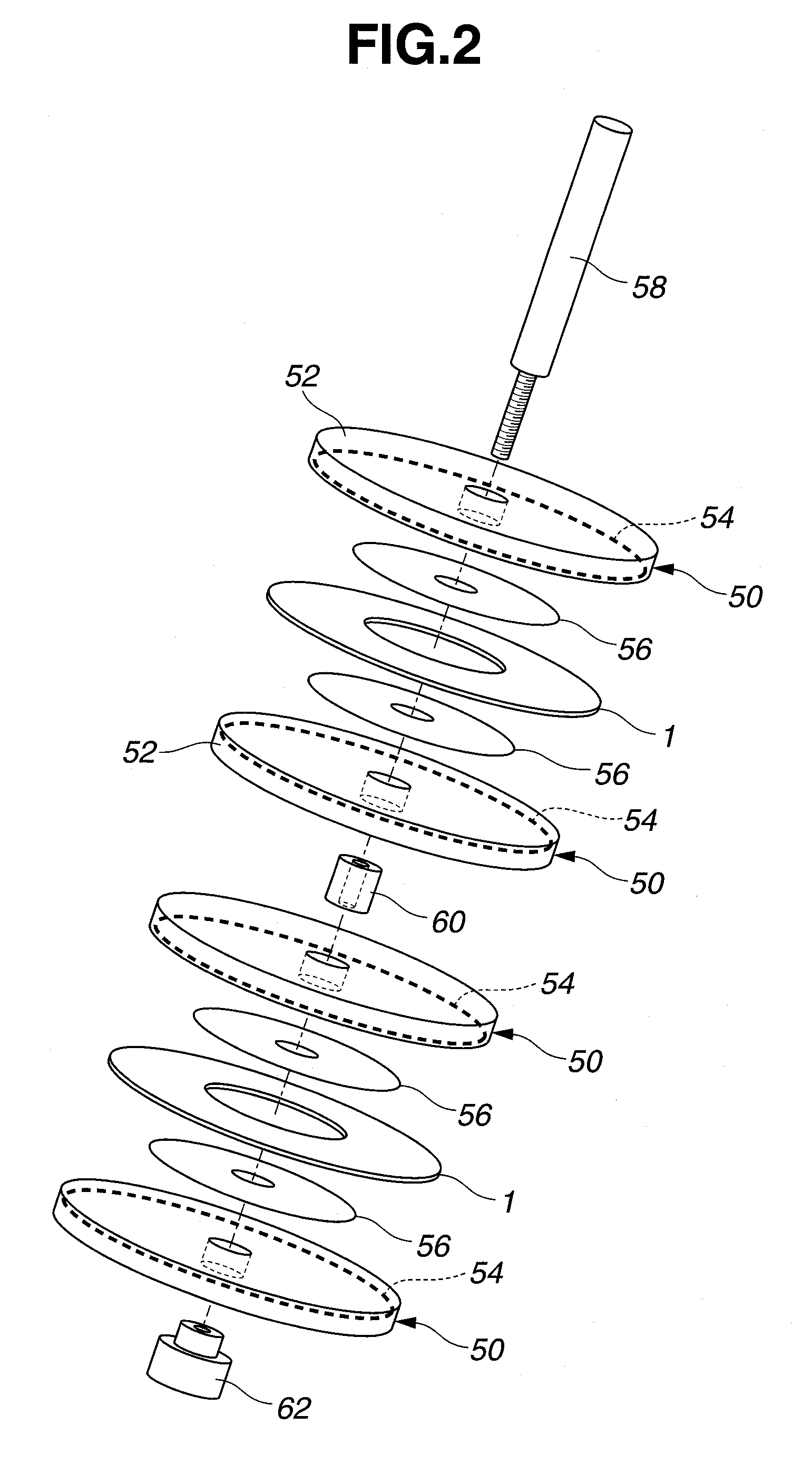Method and jig assembly for manufacturing outer blade cutting wheel
a technology of cutting wheel and manufacturing method, which is applied in metal sawing tool making, grinding devices, liquid/solution decomposition chemical coatings, etc., can solve the problems of lowering the manufacturing yield, increasing the manufacturing cost, and the cost of the manufactured wheel over the prior art cutting wheel, and achieves low cost and high yield.
- Summary
- Abstract
- Description
- Claims
- Application Information
AI Technical Summary
Benefits of technology
Problems solved by technology
Method used
Image
Examples
example 1
[0112]A cemented carbide consisting of 90 wt % WC and 10 wt % Co was machined into an annular thin disc having an outer diameter of 125 mm, an inner diameter of 40 mm, and a Young's modulus of 600 GPa and a saturation magnetization of 127 kA / m (0.16 T).
[0113]The base was masked with adhesive tape so that only a circumferential region of either surface extending 1.0 mm inward from the outer periphery was exposed. The base was immersed in a commercially available aqueous alkaline solution at 40° C. for 10 minutes for degreasing, washed with water, and immersed in an aqueous solution of 30-80 g / L of sodium pyrophosphate at 50° C. where electrolysis was effected at a current density of 2-8 A / dm2.
[0114]The cemented carbide base was ultrasonic washed in deionized water and immersed in a sulfamate Watts nickel electroplating bath at 50° C. where electricity was conducted at a current density of 5-20 A / dm2 for electroplating an underlayer. The masking tape was peeled off, and the base was w...
example 2
[0122]A cemented carbide consisting of 90 wt % WC and 10 wt % Co was machined into an annular thin disc having an outer diameter of 125 mm, an inner diameter of 40 mm, and a thickness of 0.3 mm, which served as a base. It had a Young's modulus of 600 GPa and a saturation magnetization of 127 kA / m (0.16 T).
[0123]The base was masked with adhesive tape so that only a circumferential region of either surface extending 1.5 mm inward from the outer periphery was exposed. The base was immersed in a commercially available aqueous alkaline solution at 40° C. for 10 minutes for degreasing, washed with water, and immersed in an aqueous solution of 30-80 g / L of sodium pyrophosphate at 50° C. where electrolysis was effected at a current density of 2-8 A / dm2.
[0124]The cemented carbide base was ultrasonic washed in deionized water and immersed in a sulfamate Watts nickel electroplating bath at 50° C. where electricity was conducted at a current density of 5-20 A / dm2 for electroplating an underlaye...
example 3
[0129]A cemented carbide consisting of 90 wt % WC and 10 wt % Co was machined into an annular thin disc having an outer diameter of 125 mm, an inner diameter of 40 mm, and a thickness of 0.3 mm, which served as a base. It had a Young's modulus of 600 GPa and a saturation magnetization of 127 kA / m (0.16 T).
[0130]The base was masked with adhesive tape so that only a circumferential region of either surface extending 1.0 mm inward from the outer periphery was exposed. The base was immersed in a commercially available aqueous alkaline solution at 40° C. for 10 minutes for degreasing, washed with water, and immersed in an aqueous solution of 30-80 g / L of sodium pyrophosphate at 50° C. where electrolysis was effected at a current density of 2-8 A / dm2.
[0131]The cemented carbide base was ultrasonic washed in deionized water and immersed in a sulfamate Watts nickel electroplating bath at 50° C. where electricity was conducted at a current density of 5-20 A / dm2 for electroplating an underlaye...
PUM
| Property | Measurement | Unit |
|---|---|---|
| remanence | aaaaa | aaaaa |
| saturation magnetization | aaaaa | aaaaa |
| Young's modulus | aaaaa | aaaaa |
Abstract
Description
Claims
Application Information
 Login to View More
Login to View More - R&D
- Intellectual Property
- Life Sciences
- Materials
- Tech Scout
- Unparalleled Data Quality
- Higher Quality Content
- 60% Fewer Hallucinations
Browse by: Latest US Patents, China's latest patents, Technical Efficacy Thesaurus, Application Domain, Technology Topic, Popular Technical Reports.
© 2025 PatSnap. All rights reserved.Legal|Privacy policy|Modern Slavery Act Transparency Statement|Sitemap|About US| Contact US: help@patsnap.com



